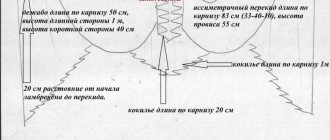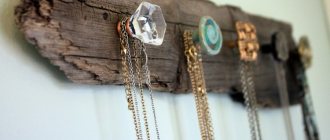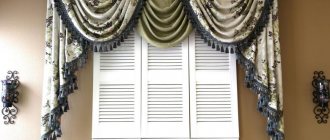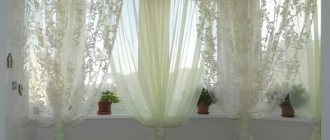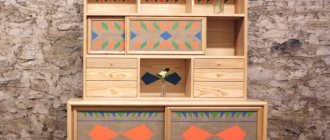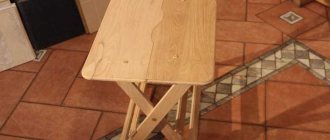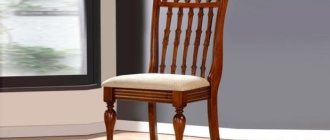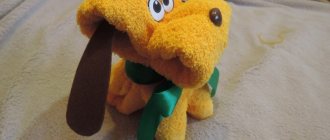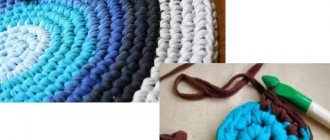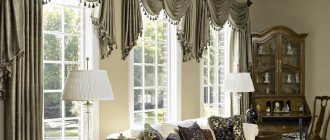The popular technique of decoupage is a surprisingly elegant, but at the same time absolutely uncomplicated creative direction. Its essence comes down to decorating furniture, household items and wardrobes with all kinds of colorful applications. Images cut from napkins, newspapers and other paper sources are fixed using several layers of varnish, thereby creating the effect of complete and seamless fusion with the surface.
Many novice needleworkers who set out to master decoupage techniques are interested in the question of what objects can be applied to. Absolutely any questions are answered by professionals. The most inconspicuous thing can be transformed beyond recognition. All the things that can be found in the attic of a grandmother’s house or in a chest in her bedroom - boxes, bracelets, flowerpots, photo frames, dishes, candles - can become a unique work of art if they are skillfully given a second life. You don’t need much for this, just patience and imagination.
Decoupage is an incredibly exciting creative technique. It does not require the purchase of expensive materials or any professional skills. As you master this amazing decorative trend, you will learn how to turn boring, everyday things into unique masterpieces - intricate, spectacular and inimitable!
This lesson presents decoupage master classes for beginners using napkins with step-by-step photographs.
To date, decoupage masters have mastered many amazing techniques - this is artificial aging, and the application of 3D images, and gilding, and craquelure coating, and other man-made miracles. Creative people clearly have a lot of ingenuity!
What is decoupage?
This is an amazing technique that allows you to give ordinary objects an unusual look using an ordinary picture or a special napkin.
This is an inexpensive way to make the interior of your own apartment or house especially cozy and memorable.
This is a great way to give your favorite but shabby items a new life.
This is a great way to spend time with your family.
The decoupage technique for beginners is not as complicated as it might seem when looking at the lovely creations, most of all reminiscent of luxurious items of palace utensils or pretty handicrafts of artisans of the 18th-19th centuries, inherited from great-great-grandmothers and retaining their enchanting beauty.
Well, speaking without emotion, the artistic technique of decoupage is a method of decoration using a picture glued to the surface and coated with varnish on top for durability.
The name of the craft comes from the French verb “to cut,” as the image was simply cut or torn out of a postcard, newspaper, or other printed items.
Features of creating decor
The essence of the method of decorating household items and furniture is extremely simple. It has remained virtually unchanged since its creation. Using decoupage, modern craftsmen restore things that have lost their former attractiveness and use them to transform interiors.
Beautiful decor to transform your interior Source kitchenremont.ru
The technique is easy to perform, accessible to everyone, and fascinating. You can work with any subject. It can be made of wood, glass, plastic, ceramics. To work, you need paper or fabric designs, scissors, rollers, glue and a polyurethane-based protective varnish.
Tools needed for decoupage Source teamnail.ru
Decoration work is carried out in several stages:
- First, the surface is prepared, dust is removed from it, dirt is removed, and the surface is degreased with alcohol.
- Cracks and chips are pre-primed, then after the primer has dried, the base is leveled with sandpaper.
Stages of creating decoupage Source donplastgarant.ru
See also: Catalog of popular plots in the Moscow region for the construction of a country house
- The finished drawings are distributed over the workpiece and secured with PVC glue. It is applied not to the base, but on top of the attached workpiece.
- The pattern is carefully smoothed out, folds are leveled, and air bubbles are removed.
- After the glue has completely dried, several layers of protective varnish are applied over the object.
The final stage is the application of protective varnish Source sunmag.me
Mastering this technique is not difficult. Using it, you can create original decorative items. The most interesting ideas for decoupage will be presented in the photo below.
Beautiful clock for the bedroom or kitchen Source handmadebase.com Artfully decorated box Source dotart.info
Set for storing bulk products Source yandex.ru
A little history
This type of creativity first appeared in the Middle Ages, when practical German artisans began to decorate the furniture they produced in this way.
But the design style reached its first heyday in the 18th century, when Italian and French masters imitated expensive inlays made of wood or leather in this way.
Note!
- DIY gifts for February 23rd - a large selection of ideas for creating unusual gifts for Defender of the Fatherland Day
- What to give a 2-year-old boy - a list of the best options for an interesting and useful gift (120 photo ideas)
Papier-mâché - TOP 120 photo reviews of original products. Detailed instructions for beginners on creating beautiful crafts
A little later, the technique became popular among poorer segments of the population. At the end of the 19th and beginning of the 20th centuries, the decoupage technique conquered all of Europe and moved to America, where it acquired the form of a craze.
The development of new technologies, an increase in production and consumption pushed handicrafts into the background, and for a long time it was in some oblivion. But now it is coming back into fashion.
Decoupage on wood: features of execution
Woodworking is considered one of the easiest, but here it is important to consider the following points:
- wood blanks must be prepared in advance: they are thoroughly sanded and cleaned of dirt, and then dried well;
- possible chips and cracks can be eliminated using a primer;
- the material should not be impregnated with anything or varnished;
- If you don’t want to tinker with old boards, you can buy a ready-made wooden version in craft stores.
Materials
The decoupage technique for beginners does not require large financial investments. At first, the craftswoman will need decoupage cards; they are denser than ordinary napkins and are guaranteed to stick without holes, tears or folds. Yes, it’s more convenient and easier to work with them.
In the future, when the technique of decoupage with your own hands is mastered almost perfectly, you can even use paper napkins from the store or newspaper sheets (such crafts look especially good in retro or simple city style).
An acrylic primer will help ensure better adhesion between the base and the design, and it will also eliminate minor surface defects.
Glue. To begin with, you can use the most ordinary PVA, but over time, such a craft can turn yellow from the inside and even crack, so in the future it is better to buy acrylic glue or adhesive varnish, which can be applied to the base and used as a final coating.
The varnish will help fix the picture and give the homemade product durability. It is best to use water-based acrylic varnish. It does not have a strong odor, washes well and dries quickly.
Note!
Kinusaiga technique - TOP-140 photos of the best ways to create crafts using the Kinusaiga technique with your own hands + instructions for beginners
Do-it-yourself passe-partout - a master class with step-by-step do-it-yourself schemes. Making tips + photos of the best examples
Decoupage with napkins: TOP-150 photos of ways to decorate with napkins. Simple instructions for beginners at home
Acrylic paints are useful if you want to make a colored base or beautifully inscribe the selected image on the surface. To begin with, you can buy two or three colors, one of which will be the base color, and the rest will become an accent to underline the design.
Napkins
To create stylish antique items, you can use special napkins, but a good option for saving the family budget would be to use ordinary multi-layer paper napkins. For decoration, you only need their upper part with a beautiful image.
Note!
- Ideas for LD (a girl’s personal diary): step-by-step instructions for making it yourself, photo reviews of the best options
Educational soft books made of felt: materials for making, detailed instructions + reviews of plots for books (100 photos)
Original do-it-yourself valentines - design options, necessary materials, master class for DIY work
Often instead of napkins, newspaper and magazine clippings, postcards and other suitable images are used.
However, for the very first works it is better to buy napkins for decoupage. They have a special density that helps to glue the image evenly or, if necessary, quickly remove it. The paper of such napkins does not tear or deform when applied.
Tools
The technique of decoupage from napkins will require preparing a small set of tools for comfortable work. It will include synthetic brushes for painting and underpainting, as well as for varnishing the finished product (it is better to purchase one wide flat and one thin brush, and later buy what you need), a spatula for sealing cracks (if any), sandpaper for leveling and cleaning surfaces, small pieces of foam sponge for applying primer or background.
Preparation
- The step-by-step instructions for beginners are quite simple. But the quality of the finished product is largely determined by the preparatory work.
- The wood is freed from knots and eyes, carefully sanded with sandpaper until a smooth surface is obtained.
- Glass, plastic and metal are degreased using alcohol or regular dishwashing detergent. Rust is carefully removed, damaged areas are lubricated with special compounds.
- The base prepared in this way is covered with any construction primer, ensuring better adhesion of the two materials.
- Painting the surface with white paint will help make the design more expressive and add additional depth.
While the primer and paint are drying (one by one, until completely dry), the drawings are prepared. To do this, suitable pictures are cut out from a napkin and freed from excess layers of paper.
The basis
Wooden cutting boards or straight plywood boxes and drawers will be useful as a basis for the first experiment.
Although you can use plastic, iron, porcelain or glass surfaces of any shape and size.
But in this case, it is necessary to take into account that all these smooth materials give poor adhesion to other materials, and the rounded or convex shapes of the object for decoration are difficult even for experienced needlewomen.
So it’s better to start decorating Easter eggs using the decoupage technique after gaining experience in creating crafts in this area.
Pictures of the decoupage technique will help you decide on your first creations and select everything you need for creativity.
Types of decoupage
Different decoupage techniques will help you elegantly design different types of surfaces.
Briefly about the main thing
Decoupage is a technique that allows you to transform the appearance of old and new things, create decor that fits perfectly into the style of the interior, making the atmosphere more homely and cozy. You can decorate any objects; any designs on paper or fabric are suitable for this; you will need a simple set of tools for the job. It is always at hand in any apartment. The ideas presented in the article will help you evaluate existing opportunities and try to do something yourself.
Decoupage - skillful products Source homepic.com.ua Ratings 0
Reverse decoupage
The reverse technique allows you to place an image on transparent objects. In this case, the design is applied to the inside facing outwards.
The principle of creating such decor is the same as that of direct decoupage, but it will require much more attention and concentration. But a decorated table or vase will definitely impress your household or guests.
Option for beginners
For the first attempt to create decoupage for a beginner as in the photographs below, it is best to use unsuitable material. This could be an old pickle jar paired with simple patterned napkins for the table.
To create you will need:
- flat brushes;
- acrylic primer;
- napkins;
- acrylic lacquer;
- sponge for washing dishes;
- sandpaper;
- acrylic glue;
- scissors and jar.
A second life is given to the jar as follows:
- The surface is degreased with alcohol liquid and wiped dry. Afterwards the jar is painted with primer in two layers and dried (you can use a hairdryer).
- The dried surface is treated with sandpaper to make the soil smooth.
- The background color of acrylic paint is applied on top of the primer using a sponge in two gradual layers. For a better vision of the picture, it is better to use light nude shades.
- The required part with a pattern is cut out of the napkin. The lower parts peel off, since decoupage only requires the top layer with the pattern.
- The design is applied to the jar and coated with acrylic or simple glue.
- After drying, the surface is coated with acrylic matte varnish in four layers, completely drying after each application. Sometimes varnishes have a bluish tint, but when dry they become transparent.
- Decoupage of the jar is finished. If desired, you can decorate the lid by applying any pattern or decorative elements: beads, rhinestones, buttons.
In such a jar you can store jewelry, buttons and threads, or other small items.
Decopatch
This technique differs from the first two types of creativity with paper and glue. In this style, the entire surface is covered with a pattern (or patterns), leaving no free space at all.
Very often the main image is complemented by patterns or ornaments that resemble patches. Therefore, sometimes such decoupage is compared to patchwork.
But it will be very difficult to rip up the area you don’t like and redo it. So the principle “measure seven times, cut once” will have to be followed 100 percent
Vintage boom
Along with Provence, shabby chic and simple city, the vintage decoupage style flourished. Actually, all of these trends are classified as vintage, that is, ancient, out of fashion, unusual for modern times. But if the craftswoman wanted to make “antique” decor without adhering to the canons discussed above, nothing stands in the way. The main condition: reflect the stamp of time, mix techniques, stick, varnish - and now, everyone is already admiring the unique vintage interior decoration.
Decoupage of boxes using vintage technique
Artistic decoupage
This technique is often called smoky decoupage. To create it, artistic drawing skills will be useful, since in it you will have to blur the edges of the pictures with the help of paints, gently combining it with the base.
If you are not sure that this technique will work out the first time, you can first practice on a sheet of paper, simply attaching a picture and finishing it with paints.
Paint, primer and brushes: which ones are better to choose
The necessary brushes can be selected in art and construction stores:
- Wide flat synthetic brush. It applies paint and primer, as well as glue and varnish. The pile should be gentle so that it is pleasant to rub across the skin of the face. Too hard a pile leaves a lot of marks.
- Tapered flat brush. With its help, narrow and small parts are painted. Both straight and beveled ends will do.
- Liner. Used for painting stems, thin curls and outlines. It should be the thinnest in the set, in size most often numbered 0. The longer the pile, the better.
- Artistic bristles. Used to artificially age the design, texture and texture. The pile should be hard, capable of slightly damaging a napkin or thin fabric. Preference is given to bristles of different lengths. The basis itself is broad.
- Fleitz. Used for varnishing the product. It should be very soft; when cleaning, do not use towels with lint.
- Fan brush. Optional, but some people use it for gluing and leveling napkins, as it has a wide range of piles.
It is not recommended to use natural fibers for decoupage; it is better to give preference to synthetics.
As for paints, it is recommended to take the acrylic version, since, unlike watercolors and gouache, it has a number of advantages:
- fits on any surface;
- when dry, they turn into a waterproof film;
- wet acrylic can be easily removed with water.
Instead of multi-colored acrylic, you can only use acrylic primer.
Basic Rules
A master class on decoupage technique will show the entire sequence of actions. It is not as complicated as it seems at first: the surface is primed, covered with paint, glue and an image are applied to it, and all this is varnished.
But before that, it’s better to learn the basic rules that will help you make a good craft the first time.
It is necessary to paint the entire surface that will be visible. For example, for a flower pot you will have to take care of painting the bottom and inside all the way to the ground, and maybe a little deeper. And if you plan to give the pot without flowers or greenery, then you will have to cover all surfaces with paint.
If imperfections are visible in the paint, you will have to repaint the entire surface, achieving the ideal tone.
Light background colors will help make the image more realistic and expressive. In addition to white, all pastel shades will look great.
Before applying each subsequent layer, the craft must be dry. Rushing through the creative process is a great way to ruin everything.
Small pictures are easier to apply. Therefore, for the first work it is better to use them. Before gluing, you should once again make sure that the picture is suitable for the selected area in size, color or subject. To do this, it is simply leaned against the base.
The glue is applied from the center to the corners, thoroughly covering the entire surface. The pattern is carefully smoothed out, straightening out all the folds.
Applying an image
There are several ways to fix a drawing on a base. But the simplest thing will be simply gluing a picture.
Decoupage for beginners step by step with photos will help you visually evaluate this method of decoration.
The whole process looks like this:
- A picture is applied to the prepared surface.
- The entire piece is carefully coated with glue, starting from the center of the image and gradually moving towards the edges of the picture (if the layer of paper does not allow the glue to penetrate to the base, then the picture is glued like a regular applique, carefully leveling out the folds and fixing all the ends).
- Leave the almost finished product to dry completely.
- Several layers of varnish are applied on top. Sometimes up to a hundred layers are used to achieve the result, but for simple homework you can limit yourself to 4-6 layers. Each of them must be dried.
Some advice from experienced craftsmen
Thick paint is harder to apply than liquid paint, so don’t be afraid to thin it. A couple of thin layers will be preferable to one thick application.
Slow drying in natural conditions will help the product retain its attractiveness longer.
You can't apply too much varnish.
Sandpaper will help correct most imperfections.
Following these simple rules and tips will help you achieve even quite complex decor, such as the technique of decoupage of bottles, glass jars or eggs.
A photo of the decoupage technique will help you see what has already been done by craftswomen and choose a suitable craft for beginning needlewomen.
Decoupage in Japanese style
Do you seriously think that the low lacquered cabinet with inlays and paintings that decorated your Japanese-style living room was hand-painted? Most likely the manufacturer used the decoupage technique. You can pick up the baton and decorate your tray and chopsticks in a similar way - but be careful, this artistic craft is addictive and it can be difficult to stop. (smiley here)
Graphic decoupage scenes in the Japanese style contain stylized images of blooming and bare cherry branches, chrysanthemums, birds, fans, as well as landscapes and subject pictures in the spirit of traditional Japanese painting. A characteristic feature of Japanese decoupage is the active use of a black background and a fairly thick layer of varnish.
Decoupage boxes in Japanese style
Those starting to master the art of decoupage will be especially interested in lacquer miniatures applied to small household items. Beginners cannot do without decoupage cards that suggest design ideas. In the process of performing, one develops one's own style and taste.
Decoupage cards will give you design ideas
Photo of decoupage technique
Furniture decoration: the best options
Elements with decoupage in home or country furniture look especially aesthetically pleasing: handmade creations give the interior a special charm. Using this technique you can create the following items:
- The back or seat of a chair (stool). With the proper amount of varnish, it can be used for its intended purpose, or as a flower stand.
- A wardrobe or chest of drawers will require costs for materials and time to cover a large area, but the result will please everyone in the household. This will look especially good in a nursery.
- A dressing table in neutral tones can be decorated to match the tone of the bedroom using decoupage techniques.
- The desktop has long dreamed of getting rid of the pseudo-wooden oilcloth - you can give a new look to your workspace with the help of designs in napkins and fabrics. The updated workplace will please the eye every time you have to work on it.
- The dining table can also be decorated in the style of the tones of the kitchen or living room. It is better to choose light green and blue tones so as not to visually interrupt your appetite with bright spots.
- Decorative shelves with a themed pattern made from napkins can be filled with books, flowers or figurines.
- You can decorate not only the whole object, but also the corners of the furniture: table, kitchen cabinet, chair or door. This solution will not be an eyesore, but will add a special zest to the interior.
- The crib is one of the most suitable places for creativity. Decoupage will perfectly complement the walls of the crib and make the piece of furniture more ethnic and magical.
Easter themes and motifs
On the eve of Easter, you always want to add an atmosphere of spring, brightness and emotion to a variety of fakes. Easter pictures for decoupage are quite varied. You can choose themes with bunnies, eggs, or focus on church and religious themes.
Speaking of the latter, seals and prints of various icons, images taken, thematic inscriptions “Christ is Risen”, “Holy Trinity”, “Easter Holiday” and so on are perfect. As an original idea and a replacement for the usual painted eggs and Easter eggs with amulets, you can make decoupage boiled eggs. Despite the fact that the idea is very time-consuming, externally it is definitely worth the effort.
What can you use decoupage on?
Lots of options:
- Furniture;
- Mirrors;
- Decorative elements - vases, boxes, clocks;
- Kitchenware - decorative cutting boards, plates and dishes;
- Household items – combs, pencils, notebooks, etc.;
- Author's decorative elements - figurines, etc.
Before starting work, it is necessary to prepare a vision of the future object. Determine in which room and what interior the item will be located, based on this, select the required color scheme and print used, and also prepare all the necessary materials.
Who is suitable for decoupage?
Decoupage is applique - most of us are familiar with such activities from kindergarten. The technique itself requires both attention and perseverance, so the ideal candidate for a decoupage artist would be a person who would like not only to do beautiful work, but also to have fun and escape from the everyday hustle and bustle.
Important: There are no health restrictions when exercising, but you need to remember that some substances used in gluing can cause allergies.
That is why it is necessary to carefully familiarize yourself with the composition of the mixtures before you sit down to work. Otherwise, decoupage is a great activity both for evening relaxation for adults and for children's entertainment.
